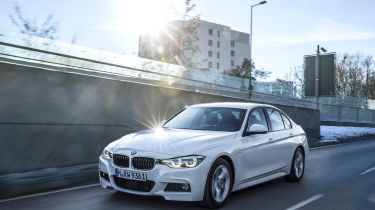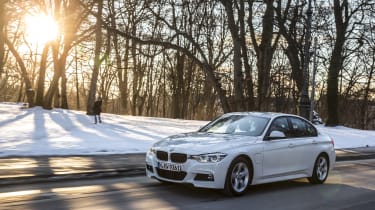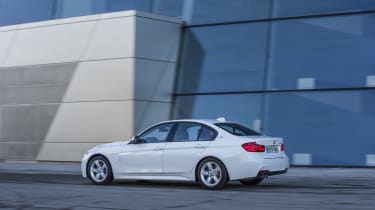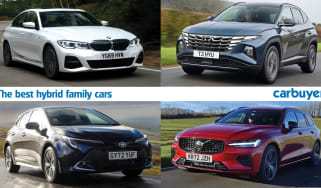BMW 330e iPerformance hybrid (2016-2018)
“The BMW 330e iPerformance is essentially a 330i with additional pulling power and lower running costs”
Pros
- Low company-car tax
- Engaging to drive
- Upmarket image
Cons
- Long options list
- Disappointing standard safety kit
- Economy figures may be hard to achieve
The BMW 3 Series saloon and its Tourer estate derivative have jointly worn the compact executive crown for a number of years. They’re forever locked in battle with the Mercedes C-Class and Audi A4 and every contender in this demanding market must constantly find fresh ways to appeal to business and private car buyers alike.
Low running costs are a big selling point for this kind of car and the BMW 330e iPerformance plug-in hybrid appeals strongly to business users thanks to its low rate of company-car tax. This is based on a car’s CO2 emissions, and thanks to its 49g/km figure, the 330e qualifies for a low Benefit-in-Kind (BiK) rating.
In truth, the 330e iPerformance is attractive before you even start plotting figures on a balance sheet. Visually, it’s barely different to the regular 3 Series saloon – only a flap ahead of the left front passenger door gives the game away. Behind this is the socket used to charge the BMW’s lithium-ion battery. This, incidentally, is key to those low CO2 emissions figures, as well as an astonishing on-paper fuel economy capability of 134.5mpg.
The 330e iPerformance combines a 2.0-litre twin-turbocharged petrol engine with an electric motor, the latter being built into an eight-speed automatic gearbox. With the two acting together, there’s a total of 248bhp on tap and the electric motor alone can take the car up to 74mph. Acceleration from 0-62mph takes 6.1 seconds – a little slower than the fastest six-cylinder diesel 3 Series, but much quicker than most of the petrol cars in the range – and you can really feel the electric motor filling in for the petrol engine’s slight lack of pulling power.
More reviews
Every 3 Series drives superbly and the iPerformance name hints the 330e’s eco credentials don’t bring any compromises. Experts may claim the extra weight of its batteries and electric motor blunt its responses slightly, but very few drivers will notice any difference to a regular 3 Series when pressing hard in the corners. With direct, precise steering and little in the way of body lean – either in the SE or more firmly sprung M Sport model – the iPerformance is well able to put a smile on your face.
It’s comfortable to travel in, too. The BMW 3 Series has a well-judged ride, with a slight firmness around town that gives way to an unruffled motorway cruise. M Sport models do the same, but with a greater tendency to emphasise potholes, due to firmer springs and less bump-absorbent tyres on bigger alloy wheels. Quietness is impressive, though – the petrol engine fades into the background at speed and rolling in slow urban traffic is almost silent when you’re in electric mode. Of all the 3 Series models, the 330e iPerformance is the most relaxing.
All the standard 3 Series attributes remain inside, too. The dashboard is well-ordered and built with precision from high-quality materials. There’s plenty of equipment: every trim has modern essentials such as climate control, cruise control, sat nav and DAB radio as standard. The iPerformance reminds you of its hi-tech nature with extended interior lighting, including a blue ‘welcome light’ specific to plug-in hybrid models and special plug-in hybrid functionality for the ‘black panel’ electronic instrument cluster.
This all helps to justify a price that’s rather elevated over the regular 2.0-litre 330i, which is essentially the 330e shorn of its plug-in hybrid equipment. However, this is offset by the £2,500 government plug-in grant, which helps to reinforce the case for this kind of car amongst urban dwellers. In every other way, the 330e iPerformance is a tax-efficient way to enjoy all the benefits of BMW’s class-leading compact executive car.















